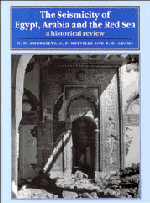3 - Instrumental information
Published online by Cambridge University Press: 18 December 2009
Summary
In compiling definitive earthquake catalogues, there must be a critical reassessment of all available information, and particularly a reconciliation between instrumental and macroseismic data. This is particularly important during the early part of the instrumental era, when misinterpretation of the scanty recorded information then available could lead to gross errors of location.
Work on the present catalogue was carried out systematically in the following stages. First, we made a macroseismic study of all the events for which information was available. This is presented in the previous chapter (Section 2.1). This was followed by the recalculation, confirmation and assessment of the position of all significant events. Spurious, mislocated and unsubstantied events were removed (see Section 3.4). A uniform recalculation was made of surface-wave magnitudes for all teleseismically recorded events, and calibration functions were derived from felt reports, to allow the determination of magnitude for earthquakes with no teleseismic information.
The information available to us, both instrumental and macroseismic, is not uniform in time, and falls into three distinct periods. In the early part of the century, up to the First World War, there are full station reports of instrumental recording, and also many sources of felt information (see above, Section 2.1). From about 1916 onwards, the availability of information decreases until the rapid increase in seismological recording and reporting in the 1960s.
Instrumental coverage
Since the mid-1980s there has been an increasing number of seismographs in our area, but previously the coverage was extremely sparse. Milne instruments were installed at Helwan in Egypt in 1899 and at Ksara in Lebanon in 1904.
- Type
- Chapter
- Information
- The Seismicity of Egypt, Arabia and the Red SeaA Historical Review, pp. 111 - 144Publisher: Cambridge University PressPrint publication year: 1994

